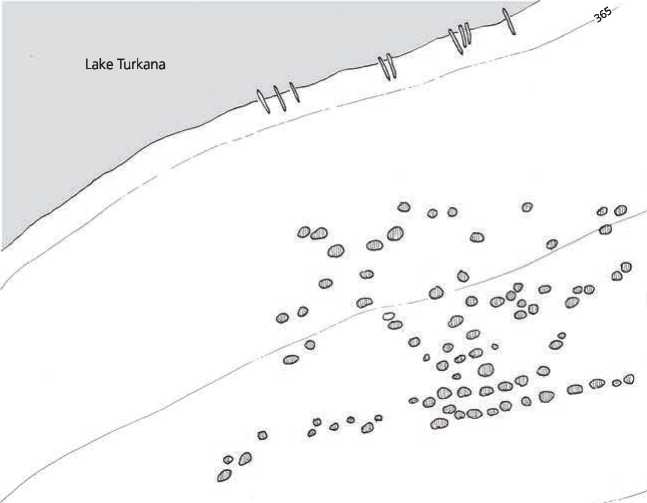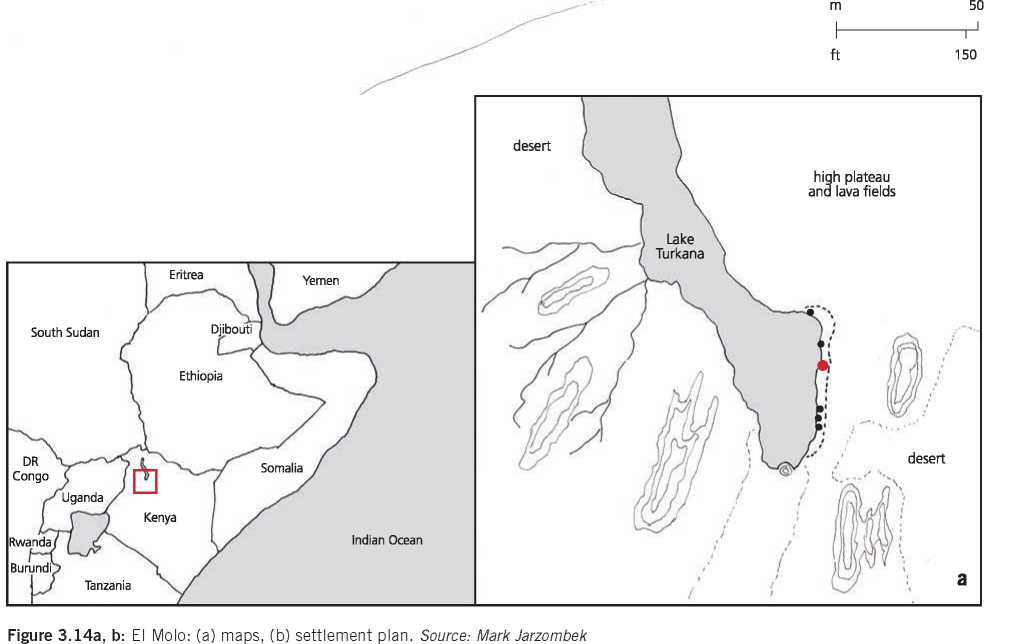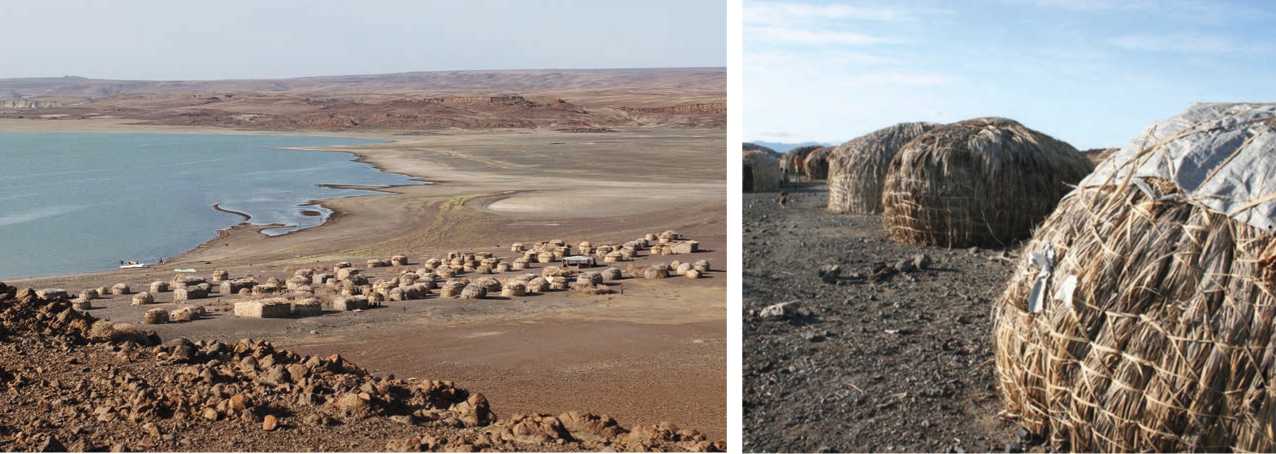The El Molo are a fishing-oriented people who live on the southeastern shore of Lake Turkana in Kenya (Figure 3.14a, 3.14b). Though they themselves are not as ancient as the! Kung, they perpetuate an ancient fish-based lifestyle in the context of an extraordinarily harsh environment. The landscape is covered almost entirely of sand, rocks, and pebbles. The few trees are scrawny and far apart. And as to the lake, with its salt and alkaline makeup, it is certainly not suited for drinking. Crocodiles lurk in its depth. To the east of the lake there are the unforgiv-


A Figure 3.16: El Molo settlement, Lake Turkana, Kenya. Source: Sarka Hastrmanova

V Figure 3.15: El Molo settlement, Lake Turkana, Kenya. Source: Guido Aldi
Ing fields of lava and desert and to the south the even more unforgiving expanse of the Rift Valley. And yet, even here, humans have found a home. Their main dietary staple is the giant Nile perch, caught with harpoons of acacia roots and fishing nets made from doum palm fiber while floating on rafts of doum palm logs. Fish is augmented by the date of the doum palm and wild cherries, which grow twice a year in the bush.
The hippo is hunted in organized groups, but is also revered as the god of the lake and every two or three years a special ceremony is organized that honors the hippo as well as the ancestors. The songs are accompanied by the shaking of two sticks and never by hand clapping. Then the hunting of the hippo is organized. The hunt involves a man swimming in the water with a harpoon and spearing the beast while others follow on the line in a support boat. Needless to say it is an extremely hazardous activity. The killer of the hippo becomes a “taboo person” for a certain period and will not be allowed to eat of the hippo’s meat. He will, however, be the hero of the feast and for all his life he will wear a special ornament, made out of the animal’s bones, in the form of an earring.
The history of the El Molo is not well known, but there is some connection to the nearby Rendille, who are nomadic camel herders to the east. It is impossible to tell who came first. In fact, over the thousands of years, there was a fluid relationship between shore - and animal-based societies for exchange. The neighboring Samburu, who are cattle raisers, and who most certainly came later, trade their sheep and goats for El Molo-made mats, ropes, and hippopotamus leather. The animals that El Molo get from them are their only source of meat.
The relationship between these groups changes with changing ecological circumstances, privileging one group over the other, creating expansions and contractions. With that in mind, a branch of the same people who became camel breeders could develop a sedentary specialization in fishing. The great famine of the last decades of the nineteenth century that killed of much of the cattle and camels forced animal breeders to adopt fishing traditions. In the late nineteenth century the entire eastern shore was dotted with communities. The Samburu brought with them their own language and, for over a generation, the El Molo grew up speaking Samburu, leaving even today few traces of their original tongue. The name El Molo comes, in fact, from the Samburu, who, similar to the Maasai, disparage non-cattle-raising people. Their phrase “loo molo onsikirri” means “the people who eat fish.” With the improvement of weather, the Samburu rebounded and returned to their original customs, leaving the El Molo as a Samburu-speaking minority.26
The El Molo huts are made from doum palm fronds and are supported using wood from the acacia tree (Figures 3.15 and 3.16). The support structure is made as a typical lattice. The palm fronds are then made into tube-like bundles that are tightly stitched around the frame. Roofing is similarly attached. The weight of the roof gives the walls their characteristic bulge. Doors are created by an opening in the structure or by means of a curved projection. Settlements are generally linear beginning with five or six in a row set back some 8 to 10 meters from the shore. As the settlement grows, new clusters are added nearby and new rows begun, ultimately producing a loose network of huts.




 World History
World History









